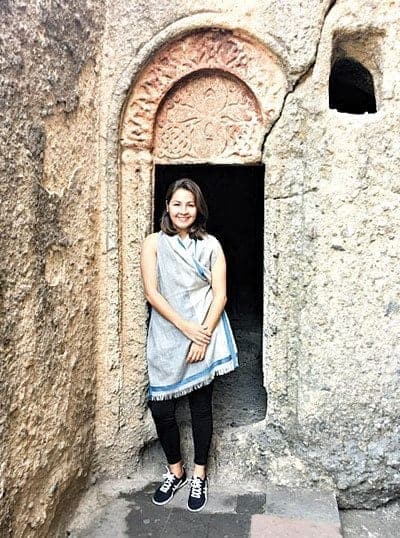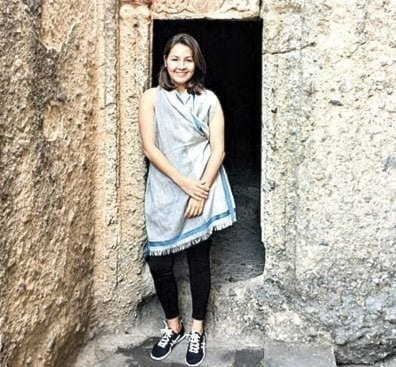While studying at Dartmouth College in New Hampshire, Kalina Newmark was tasked with to studying a non-English language as the final assignment in her social linguistics course. She took a risk in choosing an English dialect, and it paid off.

“We actually decided to study Native people and how they spoke English and proposed this project to our professor, who was absolutely gung-ho about it,” said Newmark, a Tulita Dene woman who grew up between Tuktoyaktuk and B.C.
The project would take Newmark and her project partner, Nacole Walker, a Lakota woman from Standing Rock, Dakota, to top sociolinguistics conferences around the U.S., culminated in their research being printed in one of the top sociolinguistics journals.
Sociolinguistics looks at how language develops in different cultural and social contexts.
To start, Newmark and Walker interviewed Indigenous students at their school. They were looking for slang, different tones of speaking and lilts of conversation, senses of humour—what’s called, in the U.S. the “rez accent.”
Dartmouth College, now an Ivy League institution, was founded on the principle of educating Indigenous students, said Newmark, but it wasn’t until the 1970s that any substantial Indigenous student population existed there. Since then, many people from different Indigenous groups around North America have begun to attend the school.
To get a perspective from the non-academic world, Newmark went to Tulita and Yellowknife to interview her family members.
In the case of peoples with the mother tongue of Slavey, the musical lilt of the Indigenous language accent carries over into the way many people in those communities speak English, she said—even if the people don’t speak Slavey as their first language. As well, some people speak with a sentence structure that mimics the structure of Slavey rather than English, said Newmark.
They divided the speakers into three types: people who speak this dialect in all aspects of their lives; those who speak like this only in certain scenarios—say, with other people from their community or when they are joking around; and people who don’t speak in the dialect at all.
Newmark herself doesn’t bear the traits of this dialect when she is attending school and working, but her professor, in reviewing her interviews from back home, pointed out she herself fell into it with her family members—which she didn’t even realize.
Their research theorized how the dialects came about, and why many of them bear similarities, from North to south. One had to do with residential schools.
“Like in Inuvik, at Grollier Hall, you had Dene people from the Sahtu region or even Aklavik with the Gwich’in people, and then you’ve got Inuvialuit from Tuktoyaktuk or Paulatuk coming together,” says Newmark.
These people were all learning English together and speaking together, whether English was their first or second language.
As well, forced government relocations mixed peoples together, bringing in different language influences. Intermarriage and “the pow-wow circuit,” where indigenous peoples come together for common events, may also have influenced language.
Newmark says that even if the slang is different, many Indigenous people she spoke to were able to joke around with her based on common experience—so much of their lives have been affected by government policy, and through persevering and reclaiming their Indigenous identities.
In the end, Newmark and her research partner were invited to a student conference at McGill University in Montreal, and then national sociolinguistics conferences in San Antonio and Chicago. They were given a $90,000 grant to conduct their studies with the results published in a leading journal, Language in Society.
“Right now our hope is that other people take this [research] on—especially Indigenous people,” said Newmark, who is attending the University of Michigan now to pursue a Masters in Business Administration.
“I think there’s power in having Indigenous people involved in leading this type of work, because we are the experts and we do have a lot of knowledge that hasn’t been recognized in academia. And so we’re happy that at least we’ve provided a foundation for other Indigenous scholars to take on this work.”
Newmark says she was happy for the opportunity to do this work, which has its roots in her ���ϳԹ��� and First Nations communities.
“My ultimate goal is to be successful in business but also find ways to continue to give back to the North or First Nations communities, professionally or personally,” says Newmark.

.png;w=120;h=80;mode=crop)

